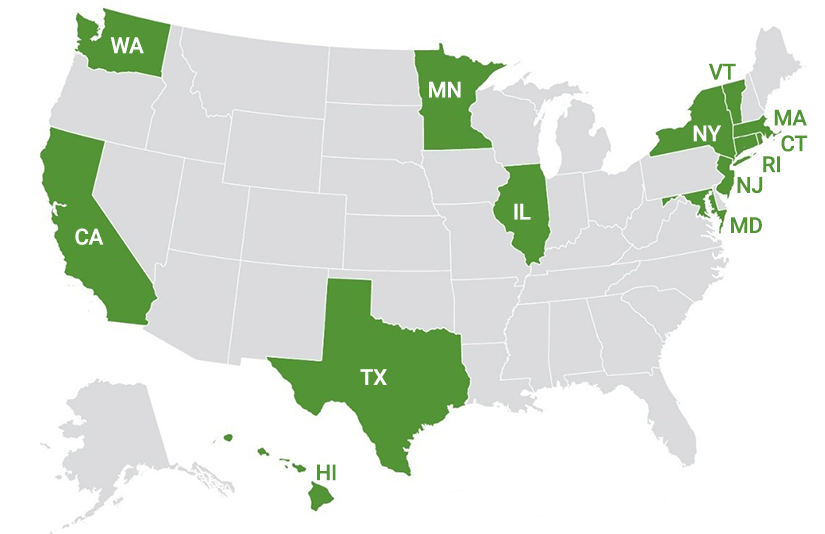Check the Stack
Oct. 30, 2019 by Jeffrey J. Cook
After Hurricane Maria devastated Puerto Rico in 2017, it took 11 months to restore power to all citizens. Hospitals and other critical facilities, such as police stations and water treatment plants, had to close or reduce services in the aftermath of the Category 5 storm, which has been associated with thousands of deaths.
The increasing frequency and intensity of extreme weather events is driving increased policymaker interest and action aimed at shoring up the resilience of critical infrastructure during long-term outages.
One pathway to improved resilience is to deploy a microgrid, electrically aggregating a set of facilities into one controllable system that can disconnect from the broader grid and rely on local distributed energy resources to continue operation while grid repairs are completed. Incorporating distributed solar photovoltaics (PV) and battery storage can augment microgrid resilience, extending operation when emergency fuel supplies are unavailable. To learn more, read Increasing Resiliency Through Renewable Energy Microgrids.
Answers to Key Questions Support Informed Policy Action
To make informed decisions that support effectual microgrid deployment, policymakers need answers to key questions, such as:
- How much critical infrastructure could benefit from such systems?
- How many states have pursued policy approaches enabling resilient microgrids?
- What policies support more widespread microgrid deployment?
In “Check the Stack: An Enabling Framework for Resilient Microgrids,” NREL analysts Jeffrey J. Cook, Christina Volpi, Erin Nobler, and Kyle Flanegin explore each of these questions to offer the industry and policymakers a clearer understanding of the opportunity for resilient microgrids and a framework for decision makers to achieve their market objectives.
Direct Costs of a Four-Day Outage Impacting Critical U.S. Facilities Could Exceed $713 Billion
The definition of critical infrastructure varies geographically, making it difficult to assess the scope of this market. Even so, the NREL study finds that at least 15 million critical infrastructure facilities exist, with an estimated cumulative load of 570 terawatt-hours.
Most of these facilities (14.7 million) are data centers, ranging from small servers in commercial buildings to hyperscale server farms such as those managed by Google and Amazon. After data centers, K-12 schools are the most common facility (129,000), followed by water and wastewater systems (85,000) and emergency services (70,000).
But despite their prevalence, data centers are not the highest energy consumers. K-12 schools and hospitals have the highest electricity loads, as shown in the graph below. The long-term outage at any of these facilities would have significant economic fallout, and the potential aggregate impact is devastating.
Leveraging the Interruption Cost Estimate (ICE) calculator developed by Lawrence Berkeley National Laboratory to estimate the direct economic impact of electricity outages for certain rate classes, including commercial and industrial customers, the NREL analysts found the direct costs of a four-day outage at all these critical facilities could exceed $713 billion, without accounting for human and other social impacts.
Relatively Few States Have Enacted Policies That Enable Resilient Microgrids
Some policymakers have already begun to enable the use of resilient microgrids to reduce critical infrastructure vulnerability during long-term outages. The NREL report identifies 28 policies, programs, or initiatives across 13 states that directly affect microgrids.

The 28 policies, programs, and initiatives can be grouped into five broad categories:
- Energy market reforms
- Grants, loans, and other financing programs
- Microgrid road mapping
- Resiliency retrofits
- Utility regulation.
Most states have adopted grant, loan, and other financing programs.
NREL’s survey of the policy landscape yields two key findings:
- Comparatively few states have adopted any microgrid-related policies, programs, or initiatives
- Those states that have adopted microgrid-related policies have taken different approaches to enable the market.
States That Take a Stacked Approach to Market Reforms Achieve Greater Success
For states interested in enabling such a market, the literature points to the importance of policy sequencing, also known as policy stacking, where policymakers adopt market reforms in a step-wise fashion to address barriers incrementally.
Though all markets and related policy stacks are different, appropriate energy policies can be categorized into three general buckets:
- Market preparation
- Creation
- Expansion.
Market preparation policies are designed to identify and address institutional barriers that may limit a technology’s market access. For example, interconnection policies that clarify how distributed PV or microgrids might be connected to the electrical grid represent one type of market preparation policy.
Market creation policies then spur direct private investment in clean energy, such as mandating the deployment of resilient microgrids for certain facilities. Market expansion policies are designed to reduce investment costs or otherwise foster widespread deployment. Tax incentives to offset technology costs are one example.
NREL’s analysis suggests states that adopt market preparation policies followed by market creation and expansion policies are likely to have more success achieving their policy goals than those that take a more piecemeal approach or adopt policies out of sequence.
Relying on the literature and interviews with 22 subject matter experts spanning 16 states, the authors developed a policy stack to serve as a guide for policymakers to make more informed decisions.
Market Expansion
• Financing
• Research and development
• Energy market reform
Market Creation
• Pilots
• Utility Procurement
• Mandate
Market Preparation
• Energy, microgrid, and resiliency planning
• Value Streams
• Regulatory treatment
• Interconnection Standards

To build a market, policymakers might wish to first consider foundational market preparation policies. This step may include conducting or supporting resilience planning to identify relevant critical infrastructure facilities that might benefit from microgrid deployment. The state may then wish to review its interconnection policies to ensure microgrids have a clear pathway to connect and disconnect from the grid.
Next, a state might consider a number of market creation policies, ranging from implementing resilient microgrid pilot programs to mandating deployment at certain critical facilities. Finally, policymakers might consider options for expanding resilient microgrid markets, such as increasing financing options or supporting research and development in new technology or business models that might result in lower cost systems and more widespread deployment.
The policies included in NREL’s report are not exhaustive, and individual states considering employing microgrids to enhance resilience and other energy policy goals will need to evaluate a wide variety of issues when developing their own policies unique to their market context. Even so, the report offers a framework interested states might consider if they wish to enable a resilient microgrid market.
Share
